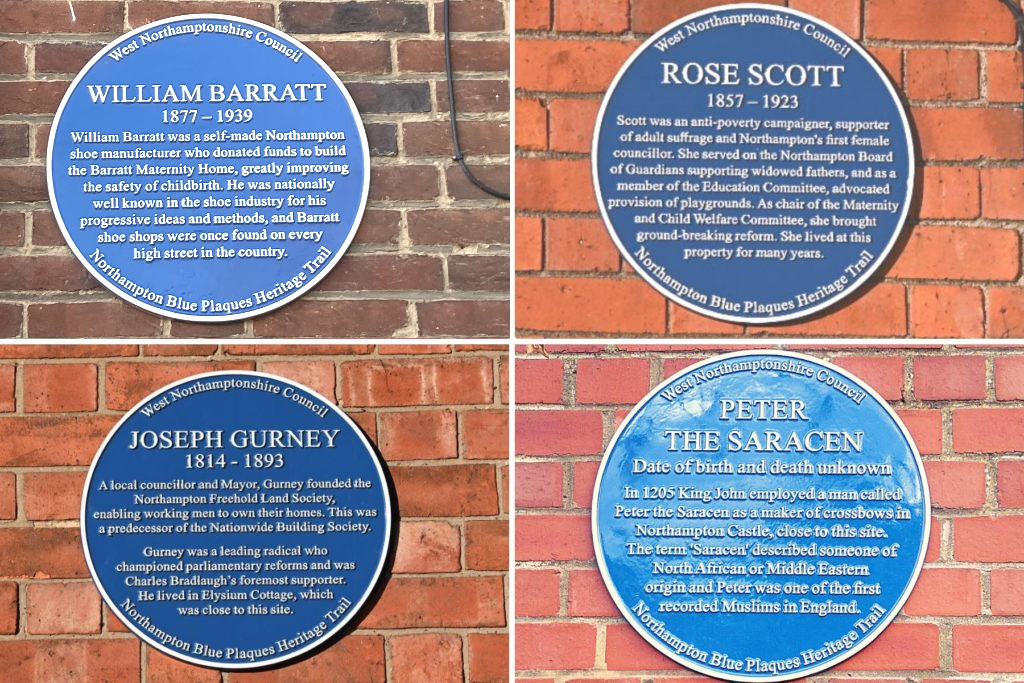Record details

|
|
|
As part of the HIstories of Northamptonshire project, the Blue Plaque Scheme is intended to commemorate people and places that have made a significant contribution to the history and culture of West Northamptonshire. |
|
|
Following the 2019 Northampton Blue Plaque Scheme, which commemorated four local people who had made a significant material contribution to the residents and reputation of the town, this is an opportunity to celebrating the heritage of the wider WNC area and recognise some of the many remarkable individuals who have called it home Members of the public are invited to propose individuals or groups for recognition via the Blue Plaque Scheme through an open application process. Nominees will be considered and final selections made by an advisory panel of experts in Northamptonshire history and cultures as well as representatives of the community. Nominees for HON Blue Plaque Scheme should
More detailed guidance on nominations and suitability can be found below. Following selection and research on the nominated individuals the plaques will be installed across the county during the A History of Northamptonshire in 100 Objects exhibition opening in September 2025. Nominations will open in 3 February 2025 with final date for submission 30 April 2025. You can make a nomination online here or alternatively email hon@westnorthants.gov.uk for further guidance and nomination form. We will also be recruiting research volunteers to assist with gathering information about the potential nominees and writing their stories for the plaque and supporting publications such as the Histories of Northamptonshire website. If you would like to be involved with the Blue Plaques Scheme as a research volunteer please visit our volunteer pages to apply. |
|
|
Guidance on making a Blue Plaque nomination Who can be nominated?
What should nominees have achieved?
Where can plaques be installed?
|
